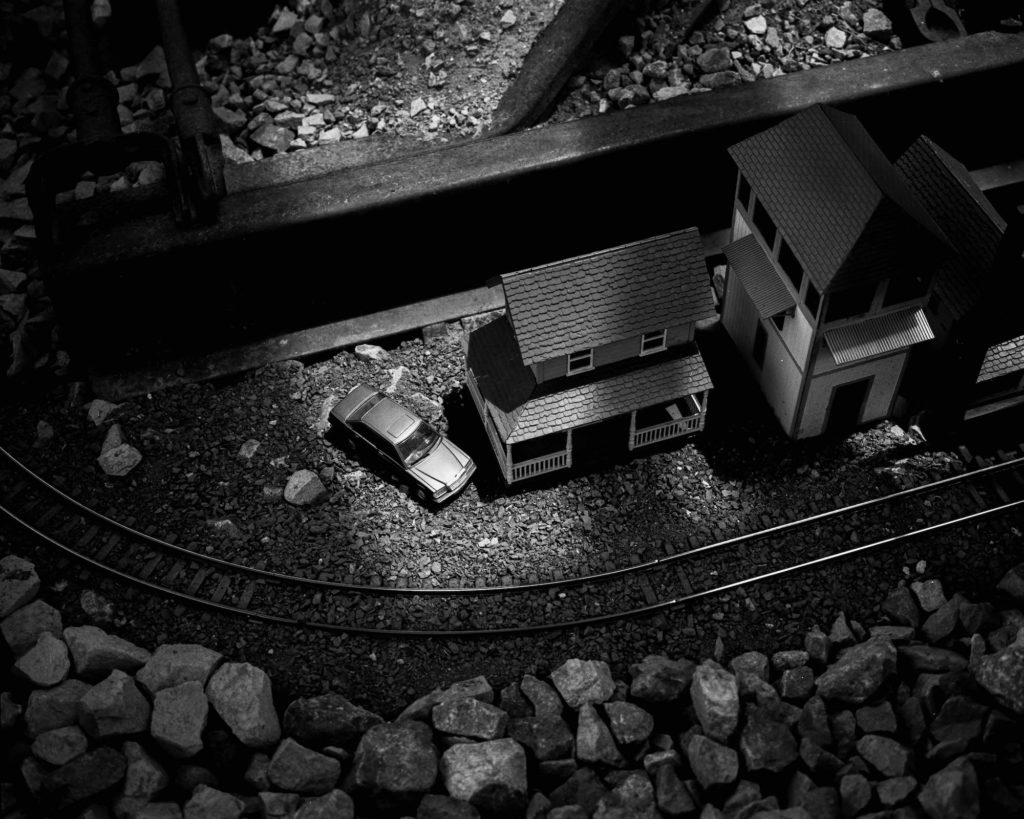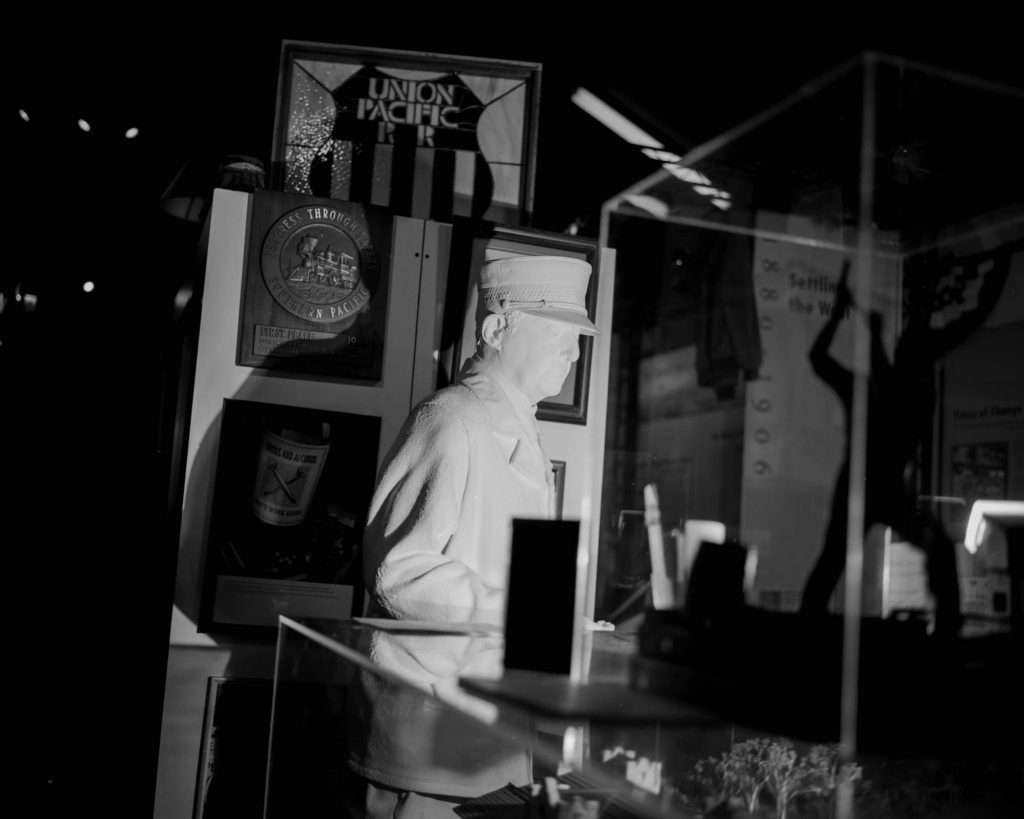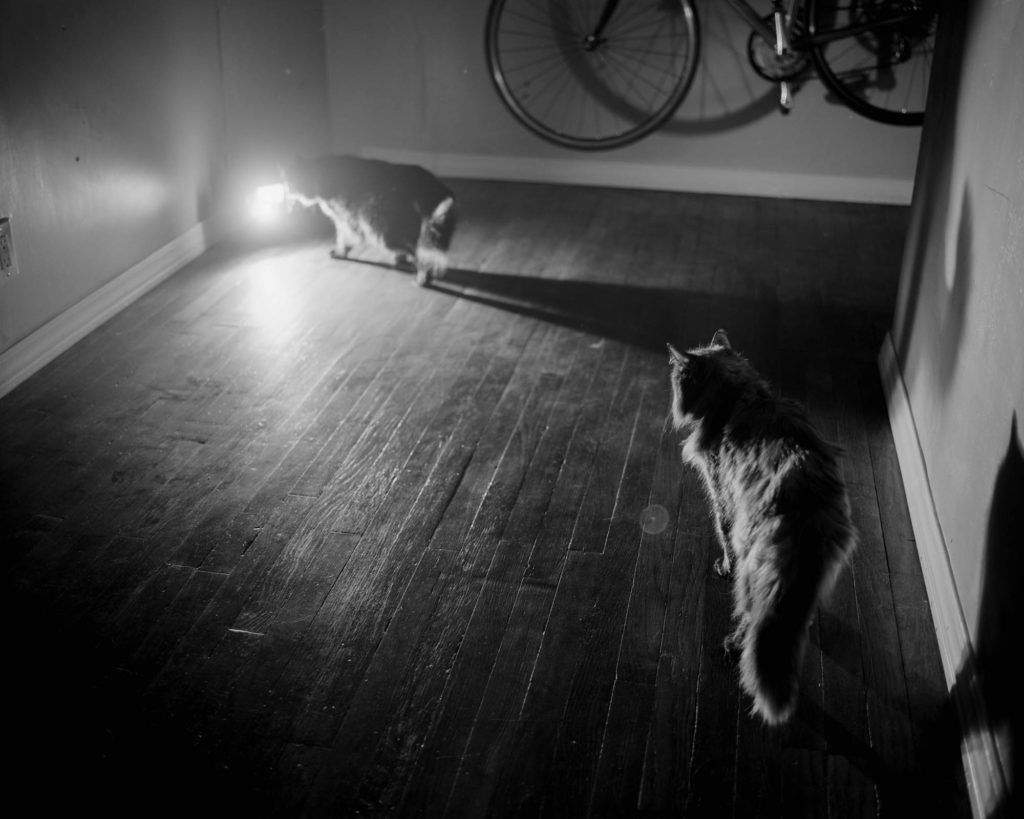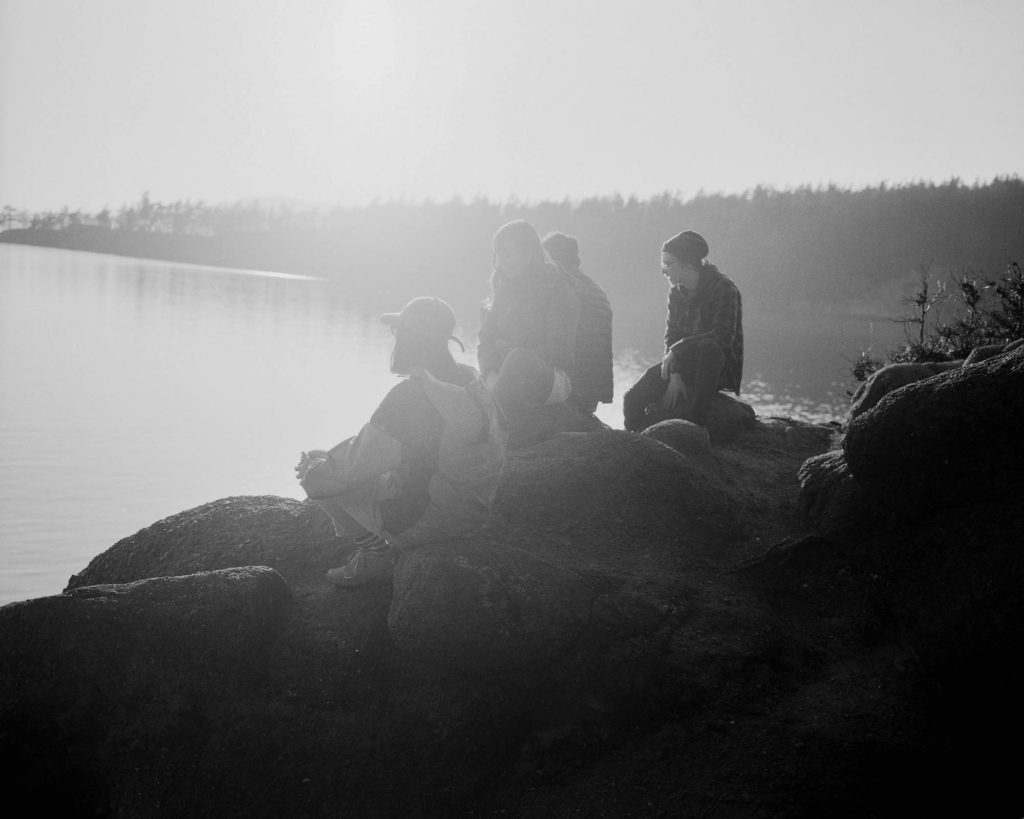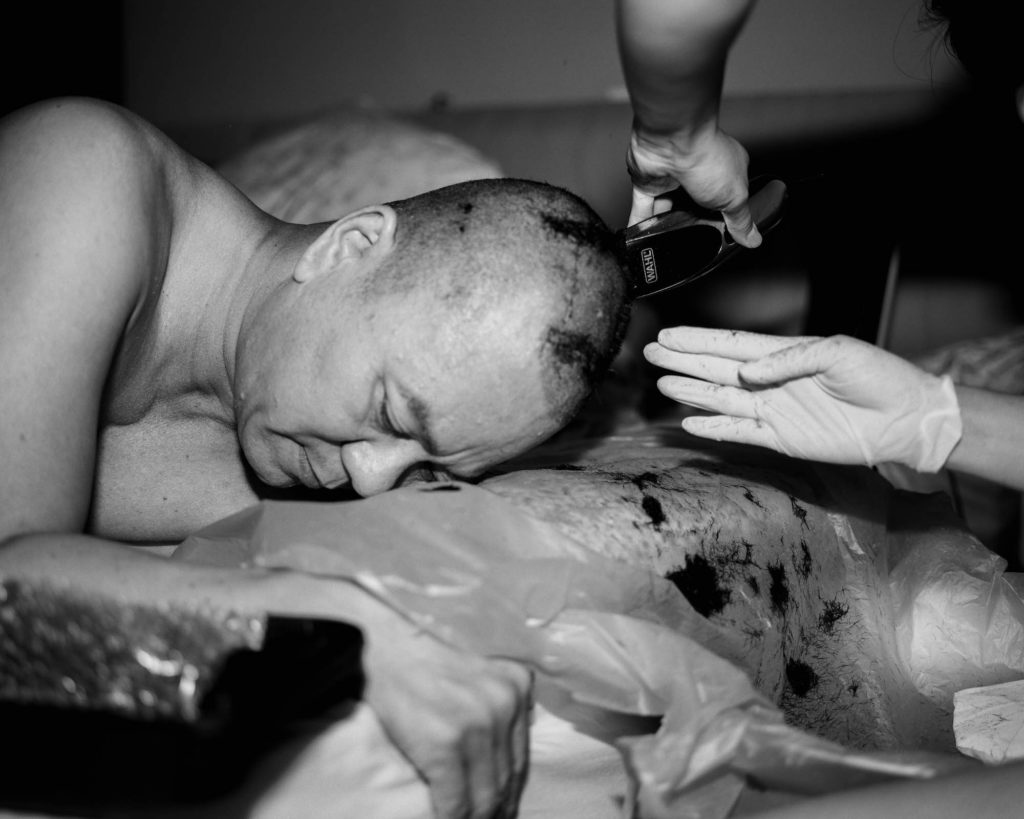Brian Van Lau is an exhibiting artist in PCNW’s 23rd juried exhibition, curated by Kris Graves.

Waco Cowboys, from the series “Lost Boy Scout,” 2019
Giclée print
Film capture (medium format)
$850
Tell us about yourself, where you’re from, and when you first discovered your love of photography.
Hey everyone! Thanks for letting me be on here, I’m a conceptual documentary photographer based in Seattle now, but I grew up in Honolulu, HI. I definitely took to photography thanks to my mother, who held all of the family photos dating back to meeting my father, but beyond that, photography became a means of having greatest artistic control (and more importantly, financial control) over making work than that of filmmaking, which is what I had initially sought to do after high school.
Tell us about the work that was selected to be included in Distinction by Kris Graves.
This image, Waco Cowboys, was made in part of a 3-week road trip from Issaquah to LA, to Austin, and back again for my project “Lost Boy Scout.” This was my first time in Texas, and after spending a day in Smithville, TX and Taylor, TX retracing the steps of Terrence Malick’s “Tree of Life,” I came back to Waco where I had been staying and happened upon a trio of cowboys riding through the suburbs. I pulled over, ran to them, and asked if it’d be ok to take some pictures of their horses, and to my surprise, Chris (the man featured in sunglasses scrolling through his phone) was more than willing to oblige. I photographed him, and his father and his father’s friend off to the side, and when I asked him about what he thought about his son and his friends and their interest, he simply responded, “I’m just glad the boys are doing something productive, riding horses.”
Was the selected work part of a larger body of work?
Yes it is, it’s part of “Lost Boy Scout,” a conceptual documentary portrait of men in America. Combining staged portraits, and typical documentary photographs, as well as pictorial images of the current American landscape, this project is an attempt to portray an increasingly complicated and by extension, more undefined ideation of modern men. Billboards, signs, iconography seem to be the final haunting pieces of a past masculinity no longer apt for the modern-day. In the end, this project has become a portrait of the non-direction this identity can be built upon if it is drawing upon the past for this new mythology. To me, the idea of the “Lost Boy Scout” isn’t necessarily a direct comment on the literal association, but an aimlessness amongst male, male identity, and to a larger extent, the eventual absence of responsibility via social dynamic in an ongoing shift in culture. One of my favorite series of essays while making work for a project prior, was Erving Goffman’s “The Presentation of Self in Every Day Life,” and the idea of all social interactions being performative to some extent or to eventually override the “true self,” and how its possible for the opposite – a complete lack of performance for the public – causes great anxiety for the self without an audience to re-affirm one’s identity. Through these interactions, and the remnants of public portrayal via icons, I think I became more and more intrigued by how men choose to portray themselves to each other, and especially myself.
Who / what are your biggest influences?
Photographically speaking, my main influences would have to be McNair Evans, Mark Steinmetz, Ian Kline, Curran Hatleberg, Tierney Gearon, Shane Lavalette, Mike Smith, Matthew Genitempo, Morgan Ashcomb, Lars Tunbjörk, Mary Frey, Joe Leavenworth, Marisa Chafetz, Hailey Heaton, Gus Aronson, Keegan Holden, Mimi Plumb, Jo Ann Walters, Sebastian Cvitanic, Marijane Ceruti, Bradley Marshall, Sophie Barbasch, Jake Reinhart, Tyler Healey, Thomas Gardiner, Matthew Jessie , Eirik Johnson, Lila Barth, and this list is going to keep on going so I’ll stop it here, but for one reason or another, be it their sequencing and theoretical abilities, or subject matter, or visual syntax being similar to my own, I’d definitely have to say my peers and artists above have been integral in developing my own artistic identity. I’d also probably name Hideaki Anno’s “End of Evangelion,” Hirokazu Kore-Eda’s “After Life,” and Edward Yang’s “Yiyi” as supplementary filmic influences if not just off of tone and subject matter alone. I think “After Life” in particular gave a degree of insight into how to look at peripheral as well as intentional memory, as the characters of the movie as well as the film itself stress the details of articulating memory via imagery, and I think that paired with Mark Fischer’s essays on Hauntology gave way to the primary themes of my works: memory via imagery giving way to an indication of our value of said memory, and the trappings of this loop causing a nearly solipsistic world-view as we try to articulate a world no longer existent, but always used as the architecture of the one that does.
Are you making work in response to the current pandemic?
Not exactly? I have started a new series to work on during the pandemic however. After my father’s recent passing, I began thinking of a memory of my 23rd birthday in an empty parking lot out of the AMC Theater in Waco, TX, ironically. I was in Waco due to this road trip making work, and thus alone for that night, repeating a ritual my father and I had done last time I had seen him in our hometown of Hawaii. As I was recollecting, I had placed him into the memory and just as easily as he had slipped in, I had deliberately chosen to erase him from it, becoming symbolic of my conflicting feelings towards the whole experience. I’ve begun digging through archives of images I’ve made through the past year-early 2019, and sequencing them in a way similar to a visual poem. Personally I’m really excited to see where it goes, because the criteria for what types of images can be included in this project have become much looser to me now.
PCNW’s annual juried call for entry provides exhibition opportunities for artists and directly supports our programs, scholarships, and labs at PCNW. This helps ensure access to photography for many future generations of creatives. We know you have many options for submitting your work, so please tell us why you chose PCNW? What are your thoughts and experience with submitting your work to different calls?
I chose PCNW because there’s not a lot of in-person galleries in Seattle to present work at. I had actually submitted two other times to the PCNW annual show and was rejected, but I had a great experience at last year’s annual show where I had met one of my new favorite artists and mentor, Liz Albert, who was also presenting work relating to affecting memory via text and image. Personally, I wish there were more shows/exhibits not being made or featured by strictly students, due to the whole process of it being very alienating to someone who didn’t have the resources to go to any sort of higher education. My experience had been mostly rejection up to a certain point where I had been curating what to submit to who based on their taste and realizing that being rejected doesn’t necessarily mean the work was poor, but didn’t fit the curator’s taste, or the tone of the show. That being said, I’ve been able to come across more artists and friends in online features/ exhibits than in-person ones, which is both a great thing and a shame to me, as an overwhelmingly majority of these people do not live in the Seattle area.

